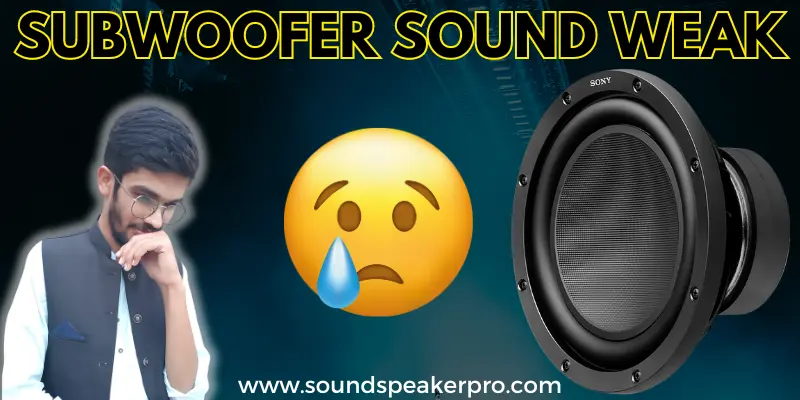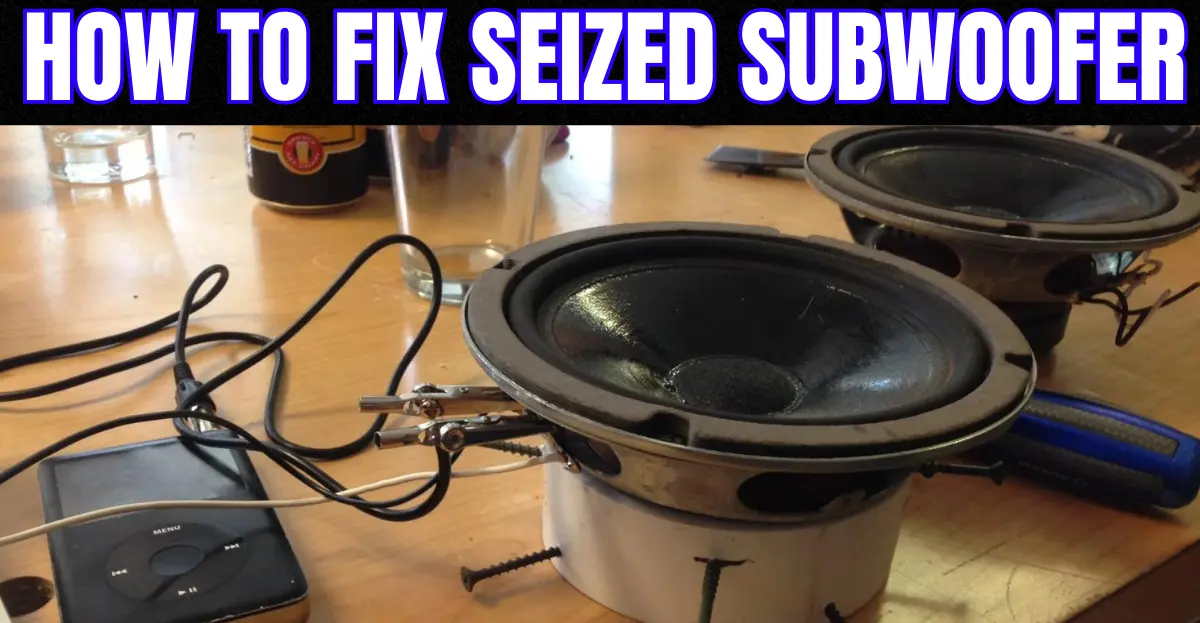
Imagine you are sitting in your room at night, thoroughly enjoying music through your subwoofer, and suddenly the sound of your subwoofer low. How would you feel? This happened to me a few days ago, and it upset me.
I contacted my friends and professionals and also sought help from YouTube and Google, asking them why does my subwoofer sound weak. The reasons that came to light were so astonishing that I was taken aback.
Today, I will present all the astonishing reasons why the sound of a subwoofer decreases, and I will also provide solutions on how you can increase the volume of your subwoofer.
Why Does My Subwoofer Sound Weak?
If the sound of your subwoofer also decreased, and you want to know why the sound of a subwoofer weak? Now, I am going to explain in detail the reasons behind the decrease in subwoofer sound.
1. Incorrect Placement
The location of your subwoofer plays a critical role in how it performs. If you’ve tucked your subwoofer away in a corner or hidden it behind other furniture, you might not be getting the best sound output.
Try moving your subwoofer around the room to find a spot where it sounds the best. Sometimes, placing it closer to the center of the room or adjusting its position relative to the walls can significantly enhance its performance.
Read More: Best Subwoofer Placements
2. Poor Calibration
If your subwoofer isn’t properly calibrated with your main speakers, it can sound weak or out of sync. Ensure that your subwoofer’s volume, crossover, and phase settings are correctly adjusted.
Many modern receivers offer automatic speaker calibration that can set this up for you, but you might also want to tweak these settings manually to match your personal preferences.
3. Mismatch with the System or room size
Not all subwoofers are compatible with all systems or room sizes. If your subwoofer’s power output is too low for the size of your room or it doesn’t match the power of your other speakers, it can end up sounding weak. Consider the specs of your current setup and whether your subwoofer is powerful enough to fill your space.
4. Wiring Issues
Check your subwoofer’s wiring connections to ensure they are secure and correctly configured. Loose or poor-quality cables can lead to significant losses in sound quality.
Upgrading to high-quality speaker cables might be a worthwhile investment to ensure that all of your system’s power and sound quality are preserved.
5. Driver Damage
Over time, the physical components of a subwoofer, like the speaker cone or the surround, can wear out or get damaged, especially if often exposed to high volumes.
This wear and tear can result in a weaker sound. Inspecting the driver and replacing it if damaged is a good idea to keep the performance optimal.
6. Room Acoustics
The acoustics of your room can have a massive impact on your subwoofer’s performance. Hard surfaces can cause sound waves to bounce around and create echoes, which muddles the sound.
Adding carpets, curtains, or acoustic panels can help absorb excess sound and reduce this effect, allowing your subwoofer to sound more powerful and clear.
How to Fix My Subwoofer Volume?

If you are troubled by the decreased sound of your subwoofer, there’s no need to worry anymore because today I will tell you methods following which you can fix the sound of your subwoofer. These are the same methods I followed to increase the low volume of my subwoofer.
1. Check the Placement
First, let’s talk about placement. Where you position your subwoofer in the room can have a huge impact on its sound. Subwoofers are often placed out of the way for aesthetic reasons, but this can compromise their performance. Try moving your subwoofer to different locations in the room to see where it sounds the loudest and clearest.
Corners can amplify the bass, but they can also muddy it if not properly managed. Play around with the positioning—sometimes even a small adjustment can make a big difference.
Read more: How to Hide Subwoofer
2. Adjust the Settings
Next, dive into the settings. If your subwoofer’s volume is low, check its onboard settings as well as those on your amplifier or receiver. Ensure the volume is turned up and that the crossover is set correctly.
The crossover determines the point at which low frequencies are directed to your subwoofer. If it’s set too high, your subwoofer might be trying to play higher frequencies it’s not designed for, leading to poor performance.
3. Calibrate Your System
Many modern home theater receivers come with automatic calibration tools that can adjust the audio output of your speakers and subwoofer for optimal performance.
If you have this feature, use it. Calibration can help balance your system’s output and ensure your subwoofer is not overshadowed by other speakers.
4. Upgrade Your Wiring
Poor wiring can also be a culprit in reducing your subwoofer’s performance. Check that all connections are secure and consider upgrading to high-quality cables if yours are old or of low quality. Better cables can enhance the signal strength from your amplifier to your subwoofer, improving the overall sound output.
5. Check for Damage
Sometimes, the problem might be more mechanical. Check your subwoofer for any signs of damage, such as a torn cone or damaged surround. These issues can drastically affect its performance. If you find any damage, it may be time to repair or replace the affected parts.
Conclusion
If the sound of your subwoofer is low and you want to increase it, then read this article completely because, in this article, I have explained why the sound of your subwoofer decreases and how you can fix a subwoofer with low sound.
When the sound of my subwoofer was bad, I adjusted the placement of the subwoofer and fixed the speaker settings, after which my subwoofer started performing well again.
If the methods described in this article have helped you fix your subwoofer, please share this article with your friends. If you have any questions, you can ask us through the comment section.
FAQs
Why are my subs not hitting hard?
If your subs aren’t hitting hard, it could be due to improper placement, incorrect settings, or inadequate power. Try adjusting the position, and settings, and ensure it has enough power for your space.
How can I make my subwoofer stronger?
To make your subwoofer stronger, ensure it’s correctly set up with optimal crossover and volume settings. Also, consider using high-quality wires and checking that the subwoofer isn’t obstructed by furniture.
How do I get more bass out of my subwoofer?
Getting more bass from your subwoofer can be achieved by placing it in a corner to enhance output. Adjust the crossover settings and make sure it’s properly integrated with your other speakers for the best effect.







